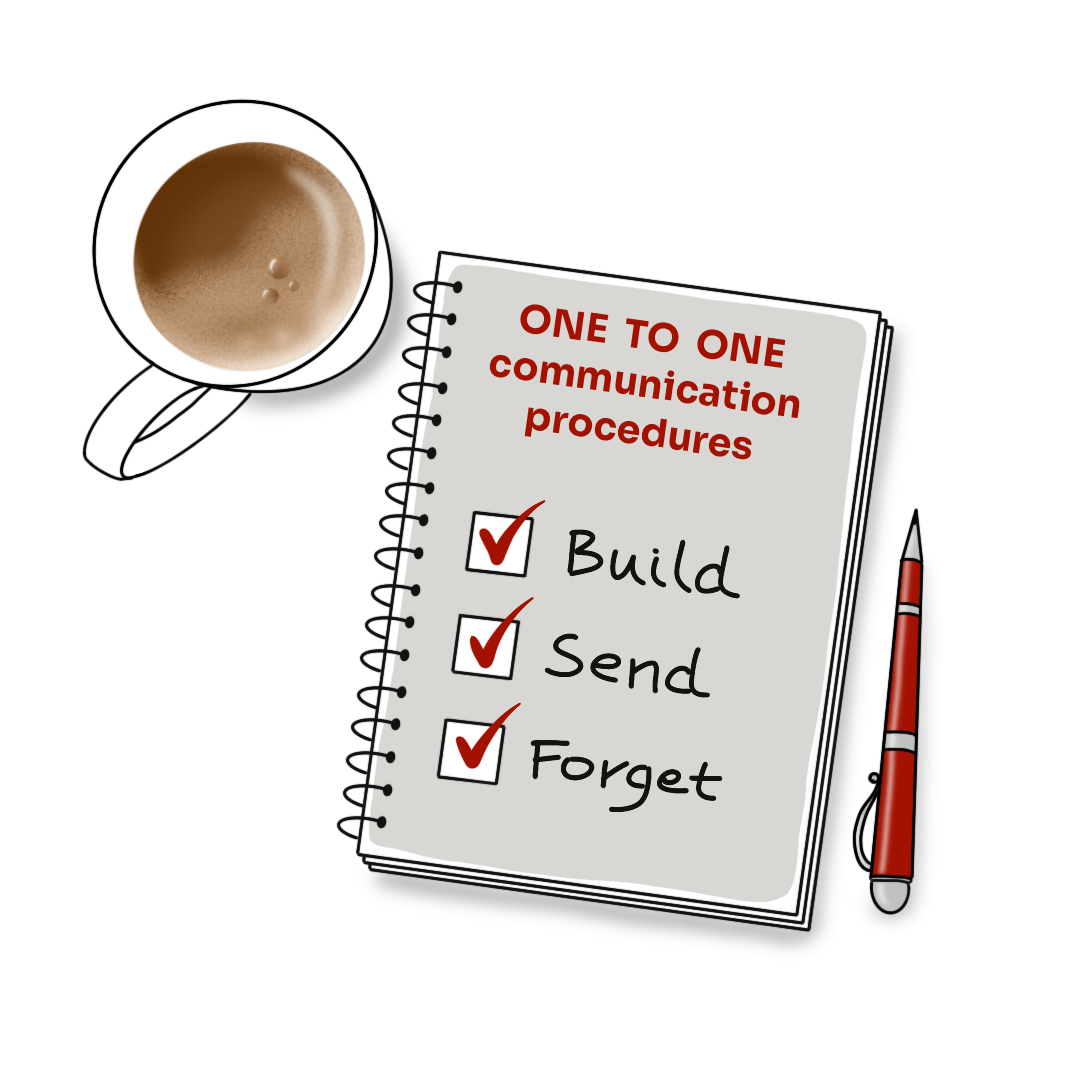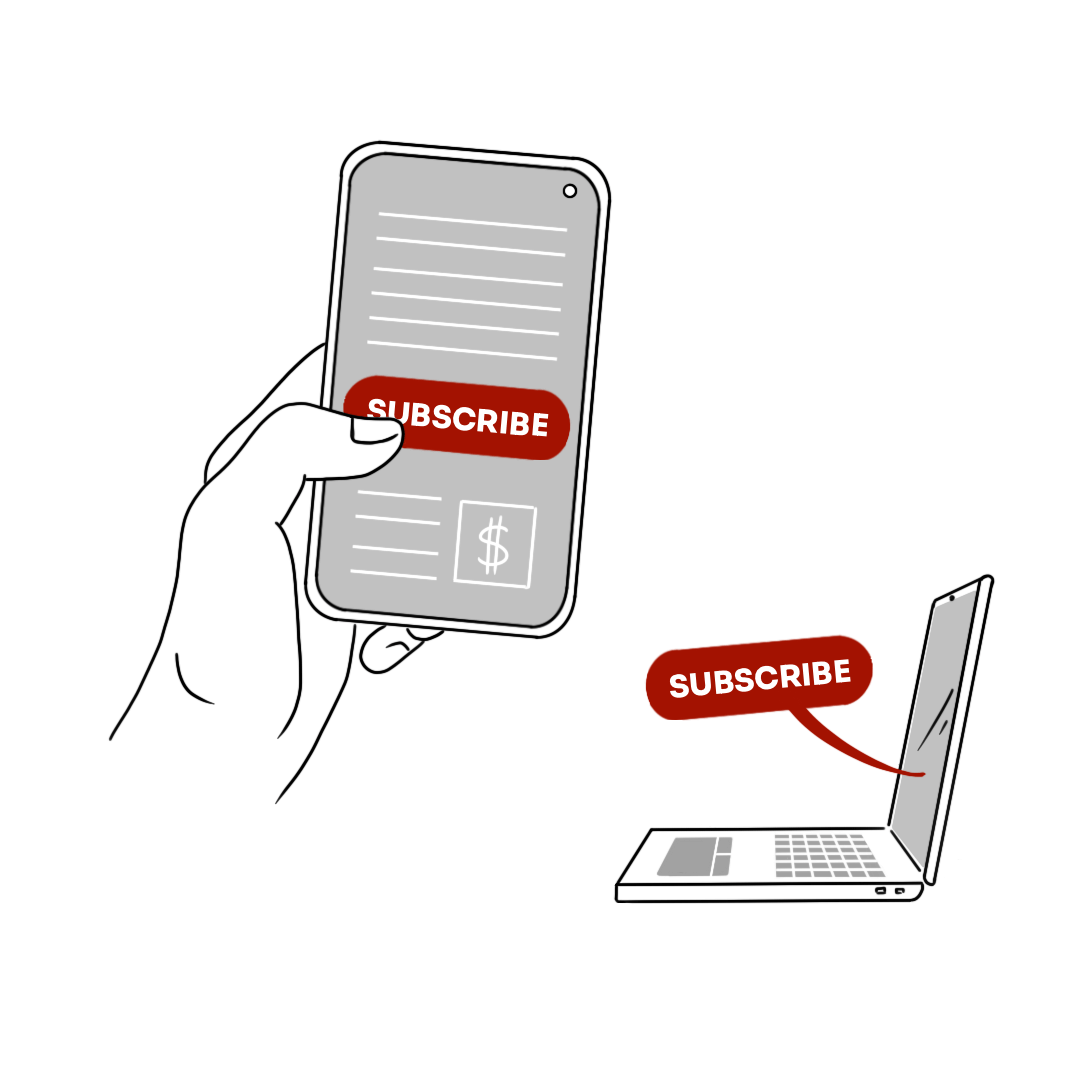Before you even start with your email communication.
Every type of email communication should be governed by established rules. If you respect them, your chances for success dramatically increase. Therefore, it is easy to see why it is worth using ready solutions, which have already been proven and improved upon, to prevent mistakes that could be easily avoided. The more precise the email communication is and the more carefully it is selected to match the subscribers’ needs, the greater the chance it has of being noticed, and it will, therefore, positively affect their willingness to visit the store or the website.
In this article, you can find some procedures that may look like material for nerds. But you can use it as a good guide to verify how your team is working with email communication. Below you will find some procedures around:
- Database synchronisation
- Email Sender Reputation
- Bounces
- The control group
- Campaign frequency
- Communication prioritisation
- Opt-out
- Autoresponder
So let’s begin!
Database synchronisation
You collect your customer email addresses, phone numbers and email communication consent throughout different, scattered entry points: your website, mobile app, sometimes in-store kiosks or even still, by paper application. Probably, you store it in many different external partners’ databases. As your email communication results depend on the data flow quality, you should pay special attention to the process of synchronising the database with the recipient list. Before you hit the “send” button, your recipient list has to be up-to-date. The most desirable solution is an ongoing, real-time synchronisation — for someone who has just signed up for a newsletter or service, his/her email address is immediately included in the defined mailing list.
If this is impossible in your company, you should ensure that the synchronisation is performed at least several times a week. Synchronisation before every mailing campaign is an absolute minimum, as customers withdraw their consent to receive communications from your brand, and you must take this into account before beginning the next campaign.
Real-time synchronisation will ensure that you do not send the email to someone who doesn’t want it anymore, which will help you secure a high level of your email reputation.
Email Sender Reputation
Your reputation is a general belief or opinion other people have about you. If you are considered trustworthy and kind, you have a good reputation. That’s how people think or label you — good or bad. It also applies to you as a marketer who seeks contact with its subscribers via email. Are you considered a spammer or a reliable sender?
So, caring for your email sender’s reputation is an ongoing process, and you can’t compromise being too greedy, dispatching the emails for any price. Your reputation will be determined by technology, so it’s good to understand the principles. The starting point is to secure a dedicated IP address assigned to the email server. This dedicated IP address gives you more control and influences over your reputation. It means that you are the only one responsible for the server’s reputation, which translates into greater effectiveness of message delivery. You can become the victim of somebody else’s mistakes when you share them with others.
Once you have sorted a dedicated IP address, it usually takes some time to build your reputation. If you are only at the beginning of your one-to-one communication journey, I recommend you start with the email account warm-up process. Like before running or gym workouts, your body requires proper exercises to prepare your heart, joints and muscles for greater stress; similarly, your email account needs a warm-up. The warm-up process includes sending emails from a new email account, starting with a smaller number and gradually increasing the number of emails each day.
And finally, to optimise your reputation, make sure that each email is tested with specialised anti-spam tools and filters before sending it. It is an investment that pays off with the higher Delivery Rate. Such tools verify several email communication parameters during tests, including the proper configuration of the sender’s mailbox, domain reputation, correct HTML in the message, and availability of websites linked in emails. All to secure that you are not sending rubbish of any kind.
Bounces
Despite good email sender reputation, real-time contact synchronisation and good overall data quality in your systems, it still may happen that your message will not be delivered. Mainly when you invest in your system, you should pay extra attention to every undelivered email, as it may mean holes in your procedures. In general, you can find two major cases in your Bounce Report:
- Soft Bounce: that originated on the recipient side, e.g., the recipient mailbox is full, or there was a temporary server failure;
- Hard Bounce: that originated on your side, primarily due to data quality/synchronisation or reputation issues, e.g. if the recipient adds our email address to the spam list or the email address is incorrect.
The number of bounces will impact your email sender’s reputation. Each case should be marked, including the reason for non-delivery in the database individually for each subscriber to avoid sending messages again to the hard-bounces email. You might also want to consider verifying the email address and using other communication channels with the subscribers, like their mobile phone numbers.
The control group
The main advantage of email communication, which your CFO would love above all other marketing activities, is its countability. You can always show the ROI and incremental sales uplift without strings attached.
The basis enabler is setting the control groups, which are the key to measuring the effectiveness of email communication. Out of your total target audience, you exclude a randomly small yet statistically significant group of subscribers since the control group should be a representative selection of your target audience and thus accurately reflect how members behave without communication. By comparing the behaviour between the two groups, we can identify the effect of your communication.
And it’s great not only to prove the commercial performance of your action. It allows you to treat every single broadcast as an experiment in which the effect is unknown, and comparisons between the control group and the treatment group behaviour are used to measure the effect of the treatment. By applying the rules, you can verify all your hypotheses and constantly improve both your financial results and customer engagement.
The downside of setting aside the control group is that you voluntarily reduce your target audience. It is often questioned by Sales Managers, who would prefer carpet-bombing ways of communication. But at some point, you simply can’t switch off subscribers from all types of communication (e.g. post-purchase reward, which is a part of the Terms & Conditions). Nevertheless, it is good to set up some basic rules to help you navigate.
- Quantity: the minimum value for the control group should be statistically significant, and there is no need to boost it any higher. A good practice is to be consistent, putting aside always the same proportion between 1-3% of the entire database to which we plan to send the communication.
- Random selection: The control group is always selected randomly based on the same criteria, allowing you to compare the results between campaigns.
Control groups are a powerful tool as they provide scientific proof of your email communication performance. There are some limitations to them that I cover in this blog (link here), but in general, it is hard to find anyone in the organisation who will be questioning the results calculated based on them.
This is why I recommend working with control groups in two separate streams:
- General control group: one general control group which will allow you to measure the global impact of one-to-one communication on business. Put aside 1-3% of your all communicable (valid address/phone number and consent), i.e. people who meet all criteria and normally would be communicated and excluded from all shipments for a period of time (e.g. one quarter). After this time, randomly select a new 1-3% group to put aside, restoring the old one to regular flow.
- Dynamic control group: create separate control groups for every specific type of communication, triggered or newsletter type (with some exceptions as mentioned above, reward example, or welcome email that should be sent to every subscriber). Regardless of the general control group, set aside a statistically significant portion of subscribers to measure the impact of this specific broadcast.
Campaign frequency
The paradox of email communication is that we’re all tired of them. Our work sometimes reminds outlook management, cleaning the mailbox (and spamming our colleagues) nine-to-five. And yet, it is still one of the most effective communication channels. But every affection has its limit, and even heavy users should get some slack.
For this reason, you should specify the frequency with which you will contact the subscribers and the maximum number of messages allowed to be sent within the defined time period. When you start and have no historical data, what are your customers’ preferences, you may set these principles at the beginning of the quarter, in consultation with the sales and marketing teams, ensuring that you do not overuse subscribers’ patience.
Initially, this limit may be the same for all subscribers (e.g. 3 campaigns per week as a fixed value). With time, as you observe the subscribers’ responsiveness (Open Rate, Response Rate), you can set the frequency on every single subscriber level (one per month for some, a couple per week for brand lovers). Acceptable frequency most of all depend on the content and customer activity. Therefore people, in general, accept more triggers (based on their actions) than newsletters (based on what you want to say). People’s openness and responsiveness in your email communication depend on the context. It is usually correlated with brand affinity (the closer the emotional bond, the higher it becomes) and stage in the purchase process (the further in the funnel, the higher it is).
Email communication prioritisation
You always will have more to say than people will be interested to hear. We choose to work in our brands mostly because we love (or at least like them). We love what we do and the content we prepare, and it is our job to share it with everyone. But our customers have many other problems, too. And every message irrelevant to recipients will reduce their interest in the future. How many chances do you think you get? The email communication prioritisation process will help you decide what message is worth sending and what is better to keep for a better moment.
Setting the communication frequency business rules and communication priorities business rules reminds the chicken and egg dilemma. It doesn’t matter where you start as long these two processes go together.
Subscribers can meet the criteria for receiving more messages, and this number exceeds your limit. Therefore, you need to determine which campaigns and dispatch have the higher priority above the others. In a simple example, your subscriber meets the criteria to be communicated with all at once: newsletter campaign about the new product, abandon browsing an invitation to an event organised by your brand. If you send all of them, you will create your own clutter and limit the overall engagement result. Sometimes less is more, so please consider prioritisation. You can do it based on the following:
- the communication itself, for example, giving priority to triggered communication over the newsletters;
- behaviour or attributes of the segments (open rate/response level)
- or even individual customers level, which in practice means that for one subscriber, the newsletter will have a higher priority and for another one – triggered communication will go first;
You can build your own criteria. The most important thing is to set them up on the real objectives, i.e. what do you want to achieve in the long run? So it should be a mix of the expected revenue uplift (short-term goals) and engagement objectives (long-term goals). Higher sales will follow the engagement, so you should know when you build the relationship and when you try to cash it.
Opt-out
Your business rules regarding communication frequency and priorities give you a sense of control. But the truth is that the customers are in control here. By clicking or not, they decide how good work you have done. So, naturally, it may happen that some subscribers no longer want to receive communications from you. Therefore, in accordance with legal requirements, they should be able to opt out from the list of subscribers.
Nobody likes when people use it, but the opt-out button should be included in every email you send. My recommendation is a discreet place in the footer, yet still visible to the receiver. If someone presses this button, you still have a chance to influence the final decision. With this process, you can only win or learn (as youtube coaches say).
On the curated landing page, you can prepare your elevator pitch, why it’s worth staying (to win), and ask them about the reasons behind the decision to leave you (to learn). Analysing this data will help you improve and be the foundation for further optimisations. It is a good practice to include a mini-survey with a list of reasons for which the Customer decides to opt out from email communication; the examples like:
- The content of the message is not interesting to me
- I have received too many messages from you
- I receive too many messages in my mailbox
- I’m not the addressee of this email
- Or others (you know what you did wrong
When you develop a wide range of one-to-one communication scenarios (push, pull) with different channels (email, sms, pushes, etc.), remember to offer the subscribers various ways to opt-out of communication. The decision about opting out is usually spontaneous, triggered by a specific message (here and now). One button followed by one yes/no question (do you want to unsubscribe) maybe not be the most elegant strategy. Perhaps they don’t like to receive your long newsletters, but they are still happy to get vouchers or information about discounts? Or maybe they don’t want to receive emails but are still OK with text messages on their phone?
I recommend you secure the opt-in structure by asking:
- Do they want to opt-out only from this type of communication (the one that they’ve just opened)?
- Do they want to opt-out from the specific channel (and name it)?
- Do they want to opt-out of the specific communication program (and name it)?
- Do they want to opt-out completely and (or) be removed from the subscribers’ list?
Building this logic and presenting it to customers is quite challenging UX work, but it pays off, as thanks to that, your email communication becomes more and more personalised, based on real customers’ wants. Remember to reflect similar logic in your database because no matter what the customer decides, you have to respect it and don’t ship any more unwanted messages.
Autoresponder
When a customer receives a message from your brand, it sometimes reminds them about unsolved issues (like ongoing claims). Or it simply raises some questions. It is why it is worth assigning an autoresponder to each mailing. Suppose someone uses the “reply” function in the message received. In that case, this email should be directed to your Customer Support Centre, and the customer should get confirmation that this case was registered. It may sound like another complex process for you, but imagine that it can reduce the number of complaints and customer questions on your social media— keep the “tough” discussion out of other people’s sight. A good practice is to answer such queries within 24 hours to keep customers positively engaged.







